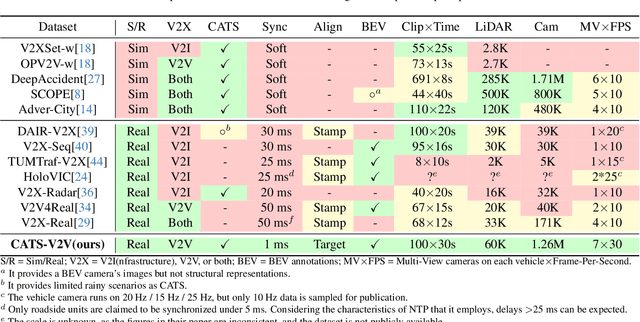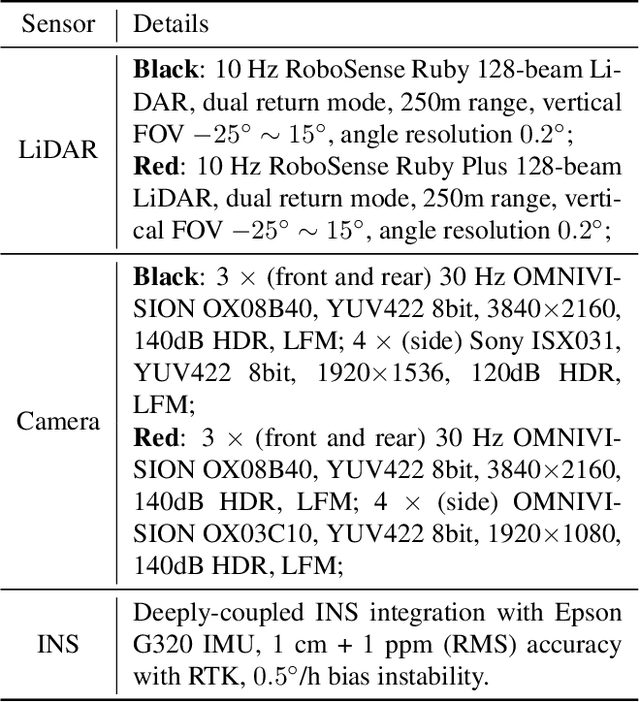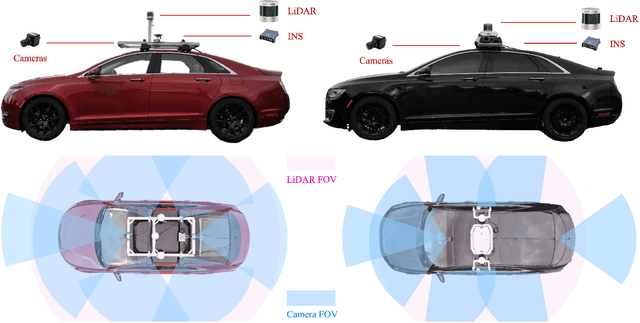Xiaopeng Li
Exploration vs Exploitation: Rethinking RLVR through Clipping, Entropy, and Spurious Reward
Dec 21, 2025



Abstract:This paper examines the exploration-exploitation trade-off in reinforcement learning with verifiable rewards (RLVR), a framework for improving the reasoning of Large Language Models (LLMs). Recent studies suggest that RLVR can elicit strong mathematical reasoning in LLMs through two seemingly paradoxical mechanisms: spurious rewards, which suppress exploitation by rewarding outcomes unrelated to the ground truth, and entropy minimization, which suppresses exploration by pushing the model toward more confident and deterministic outputs, highlighting a puzzling dynamic: both discouraging exploitation and discouraging exploration improve reasoning performance, yet the underlying principles that reconcile these effects remain poorly understood. We focus on two fundamental questions: (i) how policy entropy relates to performance, and (ii) whether spurious rewards yield gains, potentially through the interplay of clipping bias and model contamination. Our results show that clipping bias under spurious rewards reduces policy entropy, leading to more confident and deterministic outputs, while entropy minimization alone is insufficient for improvement. We further propose a reward-misalignment model explaining why spurious rewards can enhance performance beyond contaminated settings. Our findings clarify the mechanisms behind spurious-reward benefits and provide principles for more effective RLVR training.
BlossomRec: Block-level Fused Sparse Attention Mechanism for Sequential Recommendations
Dec 15, 2025Abstract:Transformer structures have been widely used in sequential recommender systems (SRS). However, as user interaction histories increase, computational time and memory requirements also grow. This is mainly caused by the standard attention mechanism. Although there exist many methods employing efficient attention and SSM-based models, these approaches struggle to effectively model long sequences and may exhibit unstable performance on short sequences. To address these challenges, we design a sparse attention mechanism, BlossomRec, which models both long-term and short-term user interests through attention computation to achieve stable performance across sequences of varying lengths. Specifically, we categorize user interests in recommendation systems into long-term and short-term interests, and compute them using two distinct sparse attention patterns, with the results combined through a learnable gated output. Theoretically, it significantly reduces the number of interactions participating in attention computation. Extensive experiments on four public datasets demonstrate that BlossomRec, when integrated with state-of-the-art Transformer-based models, achieves comparable or even superior performance while significantly reducing memory usage, providing strong evidence of BlossomRec's efficiency and effectiveness.The code is available at https://github.com/ronineume/BlossomRec.
CATS-V2V: A Real-World Vehicle-to-Vehicle Cooperative Perception Dataset with Complex Adverse Traffic Scenarios
Nov 14, 2025



Abstract:Vehicle-to-Vehicle (V2V) cooperative perception has great potential to enhance autonomous driving performance by overcoming perception limitations in complex adverse traffic scenarios (CATS). Meanwhile, data serves as the fundamental infrastructure for modern autonomous driving AI. However, due to stringent data collection requirements, existing datasets focus primarily on ordinary traffic scenarios, constraining the benefits of cooperative perception. To address this challenge, we introduce CATS-V2V, the first-of-its-kind real-world dataset for V2V cooperative perception under complex adverse traffic scenarios. The dataset was collected by two hardware time-synchronized vehicles, covering 10 weather and lighting conditions across 10 diverse locations. The 100-clip dataset includes 60K frames of 10 Hz LiDAR point clouds and 1.26M multi-view 30 Hz camera images, along with 750K anonymized yet high-precision RTK-fixed GNSS and IMU records. Correspondingly, we provide time-consistent 3D bounding box annotations for objects, as well as static scenes to construct a 4D BEV representation. On this basis, we propose a target-based temporal alignment method, ensuring that all objects are precisely aligned across all sensor modalities. We hope that CATS-V2V, the largest-scale, most supportive, and highest-quality dataset of its kind to date, will benefit the autonomous driving community in related tasks.
Efficient Reasoning via Reward Model
Nov 12, 2025Abstract:Reinforcement learning with verifiable rewards (RLVR) has been shown to enhance the reasoning capabilities of large language models (LLMs), enabling the development of large reasoning models (LRMs). However, LRMs such as DeepSeek-R1 and OpenAI o1 often generate verbose responses containing redundant or irrelevant reasoning step-a phenomenon known as overthinking-which substantially increases computational costs. Prior efforts to mitigate this issue commonly incorporate length penalties into the reward function, but we find they frequently suffer from two critical issues: length collapse and training collapse, resulting in sub-optimal performance. To address them, we propose a pipeline for training a Conciseness Reward Model (CRM) that scores the conciseness of reasoning path. Additionally, we introduce a novel reward formulation named Conciseness Reward Function (CRF) with explicit dependency between the outcome reward and conciseness score, thereby fostering both more effective and more efficient reasoning. From a theoretical standpoint, we demonstrate the superiority of the new reward from the perspective of variance reduction and improved convergence properties. Besides, on the practical side, extensive experiments on five mathematical benchmark datasets demonstrate the method's effectiveness and token efficiency, which achieves an 8.1% accuracy improvement and a 19.9% reduction in response token length on Qwen2.5-7B. Furthermore, the method generalizes well to other LLMs including Llama and Mistral. The implementation code and datasets are publicly available for reproduction: https://anonymous.4open.science/r/CRM.
A Low-Rank Method for Vision Language Model Hallucination Mitigation in Autonomous Driving
Nov 09, 2025



Abstract:Vision Language Models (VLMs) are increasingly used in autonomous driving to help understand traffic scenes, but they sometimes produce hallucinations, which are false details not grounded in the visual input. Detecting and mitigating hallucinations is challenging when ground-truth references are unavailable and model internals are inaccessible. This paper proposes a novel self-contained low-rank approach to automatically rank multiple candidate captions generated by multiple VLMs based on their hallucination levels, using only the captions themselves without requiring external references or model access. By constructing a sentence-embedding matrix and decomposing it into a low-rank consensus component and a sparse residual, we use the residual magnitude to rank captions: selecting the one with the smallest residual as the most hallucination-free. Experiments on the NuScenes dataset demonstrate that our approach achieves 87% selection accuracy in identifying hallucination-free captions, representing a 19% improvement over the unfiltered baseline and a 6-10% improvement over multi-agent debate method. The sorting produced by sparse error magnitudes shows strong correlation with human judgments of hallucinations, validating our scoring mechanism. Additionally, our method, which can be easily parallelized, reduces inference time by 51-67% compared to debate approaches, making it practical for real-time autonomous driving applications.
SMART: Scalable Multi-Agent Reasoning and Trajectory Planning in Dense Environments
Sep 19, 2025Abstract:Multi-vehicle trajectory planning is a non-convex problem that becomes increasingly difficult in dense environments due to the rapid growth of collision constraints. Efficient exploration of feasible behaviors and resolution of tight interactions are essential for real-time, large-scale coordination. This paper introduces SMART, Scalable Multi-Agent Reasoning and Trajectory Planning, a hierarchical framework that combines priority-based search with distributed optimization to achieve efficient and feasible multi-vehicle planning. The upper layer explores diverse interaction modes using reinforcement learning-based priority estimation and large-step hybrid A* search, while the lower layer refines solutions via parallelizable convex optimization. By partitioning space among neighboring vehicles and constructing robust feasible corridors, the method decouples the joint non-convex problem into convex subproblems solved efficiently in parallel. This design alleviates the step-size trade-off while ensuring kinematic feasibility and collision avoidance. Experiments show that SMART consistently outperforms baselines. On 50 m x 50 m maps, it sustains over 90% success within 1 s up to 25 vehicles, while baselines often drop below 50%. On 100 m x 100 m maps, SMART achieves above 95% success up to 50 vehicles and remains feasible up to 90 vehicles, with runtimes more than an order of magnitude faster than optimization-only approaches. Built on vehicle-to-everything communication, SMART incorporates vehicle-infrastructure cooperation through roadside sensing and agent coordination, improving scalability and safety. Real-world experiments further validate this design, achieving planning times as low as 0.014 s while preserving cooperative behaviors.
Step More: Going Beyond Single Backpropagation in Meta Learning Based Model Editing
Aug 06, 2025



Abstract:Large Language Models (LLMs) underpin many AI applications, but their static nature makes updating knowledge costly. Model editing offers an efficient alternative by injecting new information through targeted parameter modifications. In particular, meta-learning-based model editing (MLBME) methods have demonstrated notable advantages in both editing effectiveness and efficiency. Despite this, we find that MLBME exhibits suboptimal performance in low-data scenarios, and its training efficiency is bottlenecked by the computation of KL divergence. To address these, we propose $\textbf{S}$tep $\textbf{M}$ore $\textbf{Edit}$ ($\textbf{SMEdit}$), a novel MLBME method that adopts $\textbf{M}$ultiple $\textbf{B}$ackpro$\textbf{P}$agation $\textbf{S}$teps ($\textbf{MBPS}$) to improve editing performance under limited supervision and a norm regularization on weight updates to improve training efficiency. Experimental results on two datasets and two LLMs demonstrate that SMEdit outperforms prior MLBME baselines and the MBPS strategy can be seamlessly integrated into existing methods to further boost their performance. Our code will be released soon.
MapAgent: Trajectory-Constructed Memory-Augmented Planning for Mobile Task Automation
Jul 29, 2025



Abstract:The recent advancement of autonomous agents powered by Large Language Models (LLMs) has demonstrated significant potential for automating tasks on mobile devices through graphical user interfaces (GUIs). Despite initial progress, these agents still face challenges when handling complex real-world tasks. These challenges arise from a lack of knowledge about real-life mobile applications in LLM-based agents, which may lead to ineffective task planning and even cause hallucinations. To address these challenges, we propose a novel LLM-based agent framework called MapAgent that leverages memory constructed from historical trajectories to augment current task planning. Specifically, we first propose a trajectory-based memory mechanism that transforms task execution trajectories into a reusable and structured page-memory database. Each page within a trajectory is extracted as a compact yet comprehensive snapshot, capturing both its UI layout and functional context. Secondly, we introduce a coarse-to-fine task planning approach that retrieves relevant pages from the memory database based on similarity and injects them into the LLM planner to compensate for potential deficiencies in understanding real-world app scenarios, thereby achieving more informed and context-aware task planning. Finally, planned tasks are transformed into executable actions through a task executor supported by a dual-LLM architecture, ensuring effective tracking of task progress. Experimental results in real-world scenarios demonstrate that MapAgent achieves superior performance to existing methods. The code will be open-sourced to support further research.
Humanity's Last Code Exam: Can Advanced LLMs Conquer Human's Hardest Code Competition?
Jun 15, 2025Abstract:Code generation is a core capability of large language models (LLMs), yet mainstream benchmarks (e.g., APPs and LiveCodeBench) contain questions with medium-level difficulty and pose no challenge to advanced LLMs. To better reflected the advanced reasoning and code generation ability, We introduce Humanity's Last Code Exam (HLCE), comprising 235 most challenging problems from the International Collegiate Programming Contest (ICPC World Finals) and the International Olympiad in Informatics (IOI) spanning 2010 - 2024. As part of HLCE, we design a harmonized online-offline sandbox that guarantees fully reproducible evaluation. Through our comprehensive evaluation, we observe that even the strongest reasoning LLMs: o4-mini(high) and Gemini-2.5 Pro, achieve pass@1 rates of only 15.9% and 11.4%, respectively. Meanwhile, we propose a novel "self-recognition" task to measure LLMs' awareness of their own capabilities. Results indicate that LLMs' self-recognition abilities are not proportionally correlated with their code generation performance. Finally, our empirical validation of test-time scaling laws reveals that current advanced LLMs have substantial room for improvement on complex programming tasks. We expect HLCE to become a milestone challenge for code generation and to catalyze advances in high-performance reasoning and human-AI collaborative programming. Our code and dataset are also public available(https://github.com/Humanity-s-Last-Code-Exam/HLCE).
Towards Full-Scenario Safety Evaluation of Automated Vehicles: A Volume-Based Method
Jun 10, 2025Abstract:With the rapid development of automated vehicles (AVs) in recent years, commercially available AVs are increasingly demonstrating high-level automation capabilities. However, most existing AV safety evaluation methods are primarily designed for simple maneuvers such as car-following and lane-changing. While suitable for basic tests, these methods are insufficient for assessing high-level automation functions deployed in more complex environments. First, these methods typically use crash rate as the evaluation metric, whose accuracy heavily depends on the quality and completeness of naturalistic driving environment data used to estimate scenario probabilities. Such data is often difficult and expensive to collect. Second, when applied to diverse scenarios, these methods suffer from the curse of dimensionality, making large-scale evaluation computationally intractable. To address these challenges, this paper proposes a novel framework for full-scenario AV safety evaluation. A unified model is first introduced to standardize the representation of diverse driving scenarios. This modeling approach constrains the dimension of most scenarios to a regular highway setting with three lanes and six surrounding background vehicles, significantly reducing dimensionality. To further avoid the limitations of probability-based method, we propose a volume-based evaluation method that quantifies the proportion of risky scenarios within the entire scenario space. For car-following scenarios, we prove that the set of safe scenarios is convex under specific settings, enabling exact volume computation. Experimental results validate the effectiveness of the proposed volume-based method using both AV behavior models from existing literature and six production AV models calibrated from field-test trajectory data in the Ultra-AV dataset. Code and data will be made publicly available upon acceptance of this paper.
 Add to Chrome
Add to Chrome Add to Firefox
Add to Firefox Add to Edge
Add to Edge